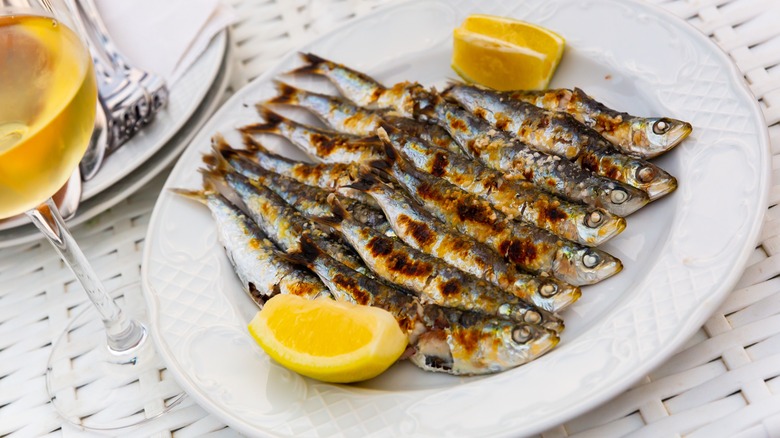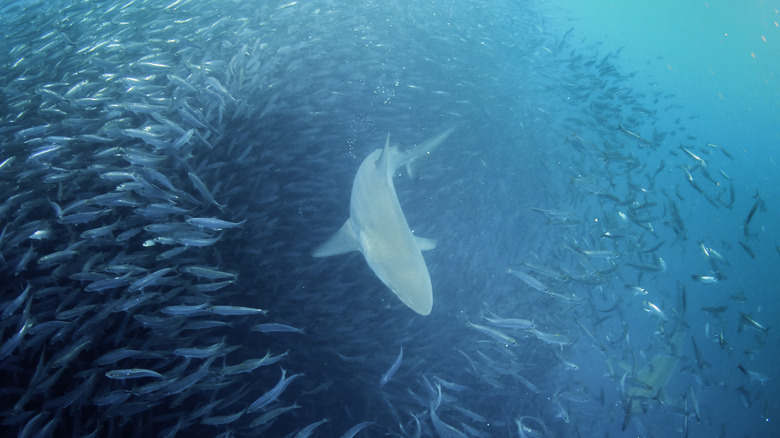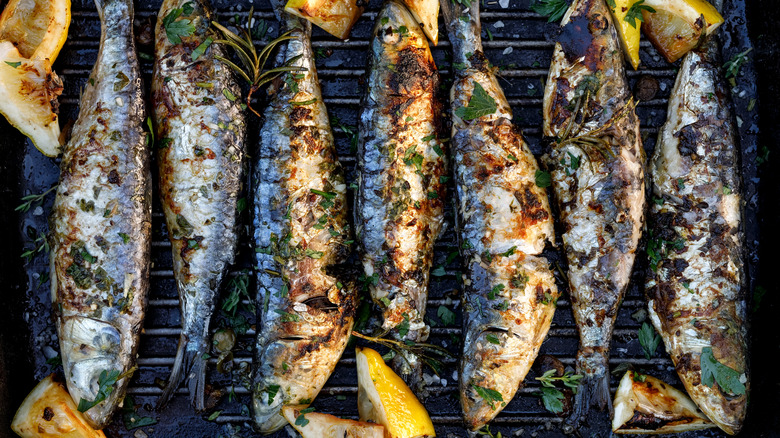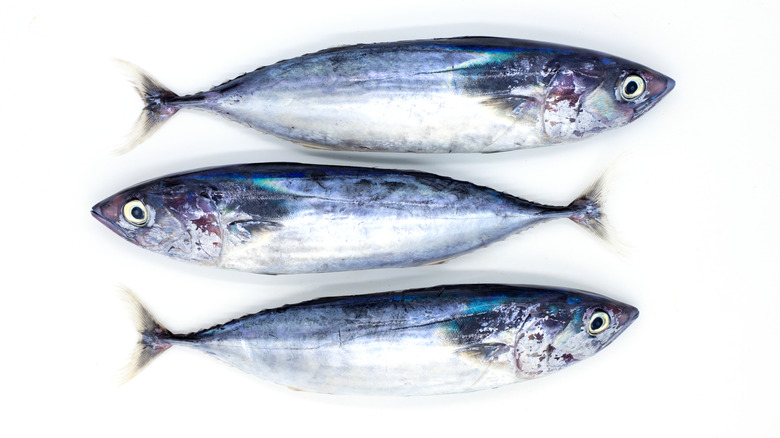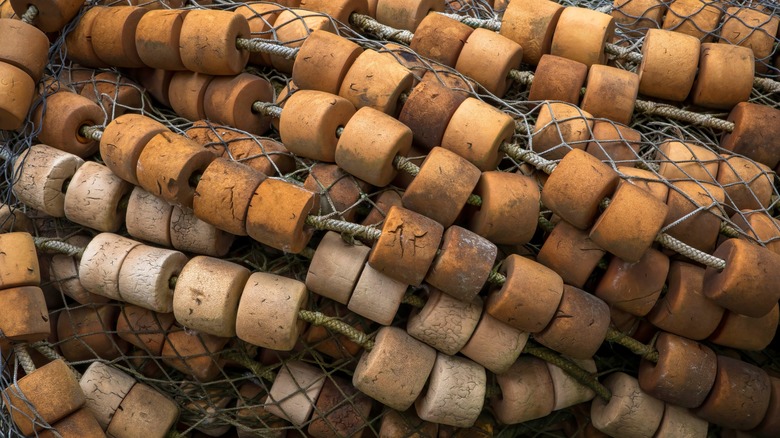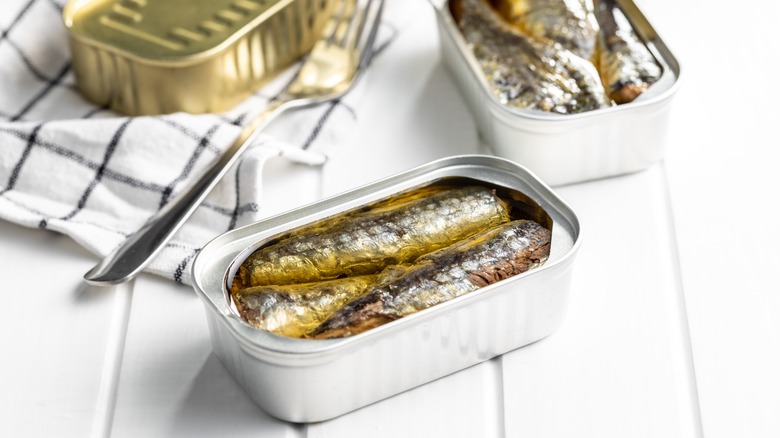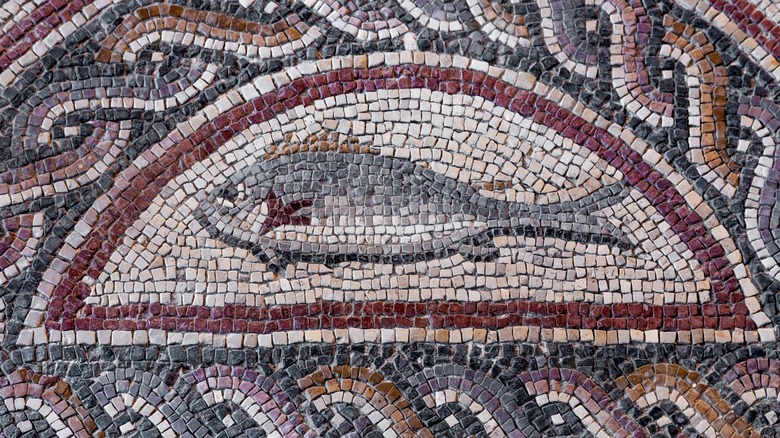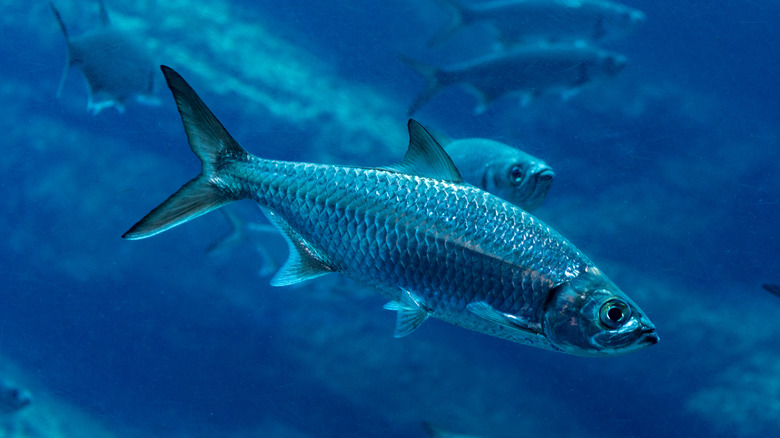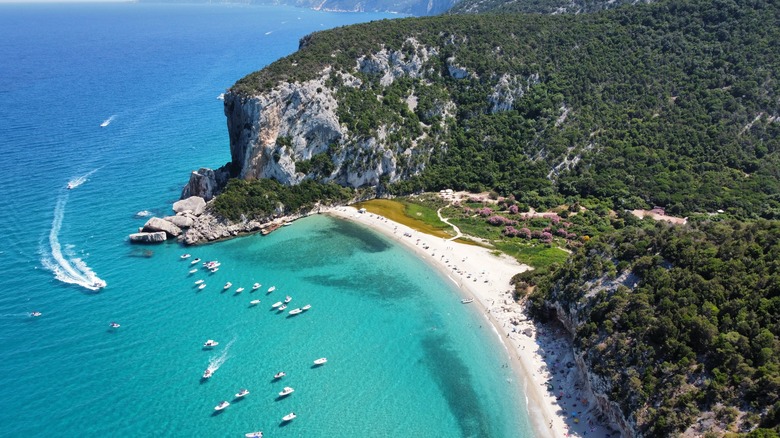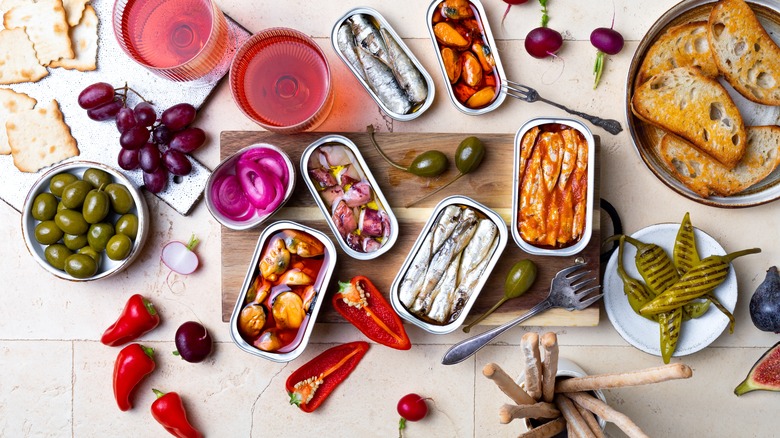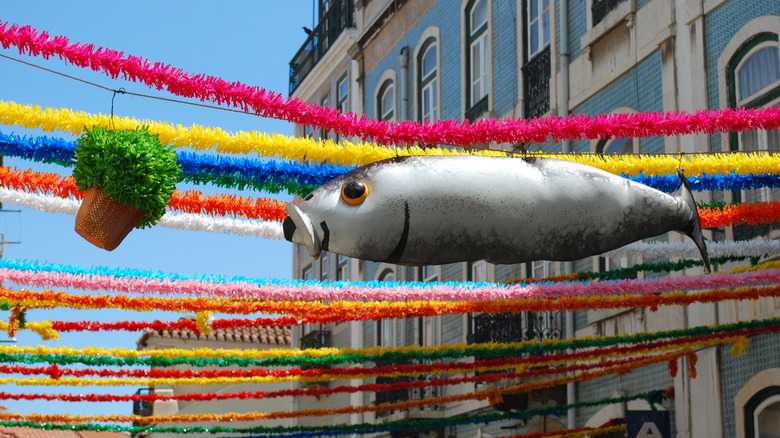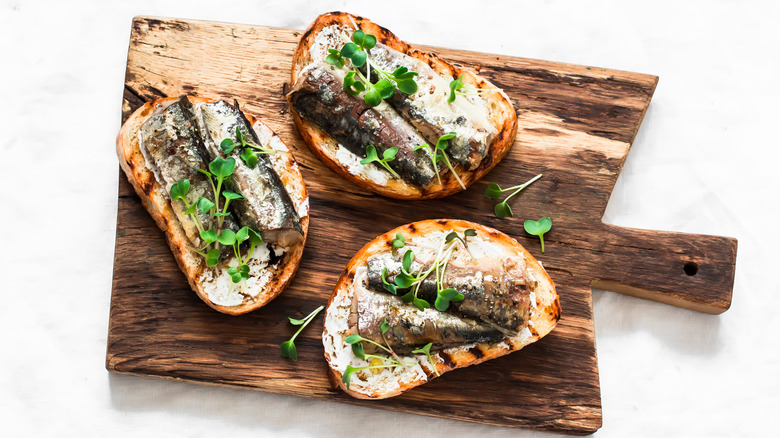15 Facts You Need To Know About Sardines
Once revered by the Romans and still enjoyed today across the Mediterranean, sardines don't enjoy the same popularity as larger fish such as salmon and tuna. However, these little oily wonders pack a big nutritional punch and are growing in popularity worldwide due to their affordability, sustainability, and delightful flavor.
From their culinary versatility to their involvement in one of the most extraordinary marine events on the planet, sardines have many secrets to be uncovered. Their story extends far beyond our plates, including their migrating patterns, the innovative methods used to catch them, and the positive impact they can have on our environment.
Prepare to be enchanted by the tiny silver fish that has rightly captured the attention and admiration of marine enthusiasts, culinary connoisseurs, and eco-conscious individuals worldwide.
So let's dive into the captivating facts of sardines and discover all you need to know about this little fish with a big story.
The Sardine Run sees billions of sardines migrate from South Africa every year
Every year, from May to July, South Africa's eastern coast hosts a dazzling ecological phenomenon. Billions of sardines begin their journey north as they migrate en mass, creating a breathtaking display known as 'the greatest shoal on earth.'
The sardines have developed a clever survival strategy: They swim in huge groups to reduce the chances of lone fish being targeted and eaten. However, the colossal shoal attracts the attention of predators eager to take advantage of the abundance of delicious treats. These include dolphins, sharks, and whales working in groups to trap the sardines and indulge in a feeding frenzy.
Sadly, the future of this magnificent annual event looks uncertain, as global warming could spell the end of this breathtaking natural show. According to Professor Luciano Beheregaray, professor of biodiversity genomics, "Given the colder water origins of sardines participating in the run, projected warming could lead to the end of the sardine run" (via Flinders University). While this would have little effect on the global sardine population, it would mean an end to a stunning natural spectacle.
While the sardine run is a significant marine event, sardines are also found in large numbers elsewhere in the world. They are abundant in the Mediterranean Sea and play starring roles in the mouthwatering cuisines of Italy, Spain, and Greece. They can also be found in the Atlantic, Pacific, and Indian Oceans, making them a true global superstar of the aquatic world.
They taste great on the barbecue
There is no need to limit your experience with these delicious fish to only canned sardines. With a bit of careful preparation, fresh sardines can be elevated to a mouthwatering feast that will tantalize your taste buds. One cooking method that perfectly unlocks the flavor potential of these tiny fish is cooking them over an open flame.
This creates a deliciously smoky taste that brings out the natural sweetness of the flesh. Let's not forget the delightful crispy skin the grill creates, resulting in the perfect texture combination for a flavorsome lunch or light meal.
Grilled sardines are best served simply to let their natural flavor shine. Try them on a green salad with a drizzle of lemon juice and olive oil, like this grilled sardines, charred lemon, and chiles recipe. Need something a bit more filling? Pair your beautiful grilled sardines with fluffy couscous and roasted vegetables for a healthy but satisfying meal.
When buying fresh sardines, choose fish with clear, bright eyes and shiny scales to ensure you have the freshest possible catch. Be sure to add some fresh herbs to your finished dish — parsley and coriander will both match the sweet, smoky flavor perfectly.
So next time you reach for canned sardines in the grocery store, why not take the plunge, head for the fish counter instead, and explore the delightful possibilities of fresh, grilled sardines? Your tastebuds will thank you for it!
Canning sardines softens the bones
Some people are put off eating sardines and fish in general because they contain bones. The prospect of preparing a whole fish can be daunting, and getting a bone stuck in your throat can be a traumatic experience that could understandably put you off eating fish altogether.
However, although sardines are bony fish, the canning process softens the bones, meaning they can easily be eaten without fear of being speared by an errant bone.
This makes sardines a great first fish for babies who are weaning, as there is no chance of them gagging or choking on a bone. In addition, the DHA form of omega-3 fatty acids contained in sardines is essential for developing a baby's brain and eyes and may improve focus and memory retention as they grow. As a bonus, introducing a strongly flavored fish such as sardines into a child's diet will significantly increase their chance of embracing a wide variety of flavors throughout their childhood.
So if you've been letting the fear of bones turn you away from eating fish, grab a can of sardines and reap the health and flavor benefits for the whole family.
Sardines are better for the environment
Many of us are becoming more aware of the impact we are personally making on the environment. Some people are choosing to cut down or give up meat products and switch to a plant-based diet in an attempt to lower their carbon footprint. However, adding sardines to your diet may impact the environment more than you would imagine.
As you may expect, sardines have a significantly smaller carbon footprint than land animals such as cattle since they don't contribute to greenhouse gases and do not require the care of farmed land animals.
However, a study from 2018 published in the journal Frontiers in Ecology and the Environment suggests they may even have a smaller environmental impact than vegan and vegetarian foods. This is good news if you are flirting with the idea of going vegetarian or vegan for environmental reasons but you're not quite ready to make the jump. Instead, opting for a pescatarian diet rich in sardines could benefit the environment just as much as plant-based diets while providing you with the omega-3 and protein these tiny fish contain.
So, if you've been pondering ways to lessen your environmental footprint, consider giving sardines a spot on your plate. These little beauties are packed with goodness for your body and brain and could be a game-changer in your efforts to make a global difference. It's a win-win situation. Delicious and eco-friendly? Yes, please!
Sardines are lower in mercury compared to tuna
So you've decided to improve your health and help the planet at the same time by replacing a lot of your meat intake with fish: Brilliant! But then you discover that eating fish comes with its own risk — mercury toxicity.
Although mercury occurs naturally in the environment, humans have dramatically increased it by burning fossil fuels and dumping waste into the oceans.
Virtually all fish nowadays will have trace amounts of mercury, which is absorbed when eating the fish. But don't give up on your pescatarian plans just yet. Some fish contain significantly more mercury than others, so replacing the fish at the top of the list with safer alternatives makes sense.
Thankfully, small fish such as sardines contain low mercury levels, whereas larger fish like tuna are concerningly high (via Healthline). This is because tuna are higher in the food chain and eat other mercury-containing fish, whereas sardines eat mostly plankton. Tuna also live longer, meaning they absorb more mercury over their lifetime.
The great news is that canned sardines can happily replace tuna in your diet due to their similar texture and flavor. They taste great mixed with cream cheese on a sandwich, as a filling for a baked potato, or baked in fishcakes.
So if you're craving seafood but want to keep your mercury levels low, turn to the trusty sardine sidekick, and you can enjoy your fish-rich diet without worry.
Sardines are often caught using a method called purse seining
Sardines swim in large, closely knit shoals to protect against predators. The vast numbers of fish in the shoal make it difficult for a predator to single out individual fish to attack. However, fishermen can use this to their advantage using a method called purse seining.
When fishermen spot a shoal of sardines swimming near the water's surface, they seize the opportunity and approach with their purse seine net. The net has cork floats at the top to keep it afloat and weights at the bottom to allow it to sink below the water's surface.
With the net strategically positioned, it is lowered into the water, surrounding the shoal of fish. The fishermen skillfully draw the bottom of the net together using a cable — the purse line — which prevents the sardines from escaping.
Purse seining is an efficient method of capturing sardines and other fish, such as anchovies and tuna. It allows fisherman to maximize their catch while reducing the accidental catching of other species. It is a crucial resource for fishermen to ensure the long-term health of marine pollution.
Sardines make an excellent food choice for eating healthily on a budget
When making an effort to eat well, it can often feel like a never-ending battle between your wallet and your waistline. No matter how good your intentions are, the price of nutritious food can be a barrier to your health goals. Fear not — because this is where sardines can come to the rescue.
These little swimmers pack a big punch when it comes to essential nutrients like omega-3 and calcium, the superhero duo for a healthy heart, glowing skin, and strong bones. Since these tiny fish are so abundant, the cost remains affordable compared to most other fish. And so, while the price of meat products and premium fish such as tuna continue to rise, sardines are still a savvy choice for those looking after their pennies. Canned sardines are a particularly good budget choice, as their long shelf life means less chance of waste.
The robust taste of sardines also means that you can make a portion go a long way — a small amount can add a big flavor boost to a dish. Add a couple sardines to a tomato-based pasta to elevate the protein and healthy fat content, or simply opt for classic sardines on toast. Sardines are a great step toward a healthy body — and they won't hurt your pocket book!
A common food of the ancient Romans
The popularity of sardines across the Mediterranean has a history dating back to Roman times. Their availability in the sea and distinctive savory flavor led to them being the main ingredient in the Roman fish sauce garum. To make garum, the sardines were fermented by covering them in salt and water, then left for weeks or even months. Since this process was lengthy, garum was produced in huge quantities, with hundreds of kilos of sardines fermented in one go.
Over time, the enzymes and bacteria transformed the fish into a rich, salty liquid that was filtered and left to age for several months to develop a complex, umami flavor. It was used in various dishes as a condiment, to enhance the existing savory elements, or in stews and soups to add depth of flavor.
A group of history and food experts met in Portugal (in 2021) to recreate garum authentically, as it had been done in Roman times.
"The rescue of this part of our history can reconnect us with the way we ate in this land centuries ago," says Pedro Almeida, the chef involved in the Garum Lusitano recreation (via Atlas Obscura).
The event occurred in Troia, Portugal, an important fish-salting site of the Roman Empire. The team used ancient tanks to ferment 400 kilograms of sardines. In producing this authentic garum, a connection to their ancestors from hundreds of years ago was forged, bridging a culinary gap between past and present.
Sardines and pilchards are the same species
If you are a seafood enthusiast, you may have wondered what the difference is between sardines and pilchards, given the similarities between the two. The truth is, these two delectable fish are actually part of the same species – it's a technicality that sets them apart. In Europe, they've devised a way to differentiate between the two based on size.
If these little swimmers reach over 6 inches in length, they proudly earn the title of pilchards. On the other hand, their smaller siblings are called sardines. However, it's a different story elsewhere in the world, as they stick with the name sardines no matter their size.
This is good news for sardine lovers as it means you can now make recipes involving either sardines or pilchards! You can easily adapt their unique, oily flavor to suit an assortment of dishes, and they lend themselves beautifully to various cuisines, including Italian, Portuguese, and French. Whether it's sardines or pilchards you have on hand, you can't go wrong with this delicious stuffed sardine dish.
Sardines go brilliantly with tomatoes
When it comes to choosing the perfect partner for tomatoes, most people will pick basil, mozzarella, or avocado. However, you may not be aware that sardines and tomatoes are a match made in food heaven. The tomatoes' fresh, tangy sweetness cuts through the sardines' oily richness perfectly — and this combo will make your tastebuds dance with delight!
Whether it's a sardine variation of this pasta Puttanesca, on top of an avocado and pomegranate salad, or simply freshly grilled sardines with a simple tomato salsa, the options for pairing these wonderful foods are endless.
Both tomatoes and sardines go perfectly with other intense flavors, such as garlic and chili, so don't be afraid to experiment and create your own culinary masterpiece.
Pairing sardines with tomatoes also gives your meal a huge nutritional boost. Tomatoes contain antioxidants such as lycopene, while sardines are rich in omega-3, protein, and calcium. This means that any dish with both of these superstars will be a nutritious party on a plate. So what are you waiting for? Grab some tomatoes and sardines on your next trip to the supermarket and whip up a gastronomic delight!
They are named after the island of Sardinia
Nestled in the sparkling waters of the Mediterranean Sea lies the beautiful Italian island of Sardinia, and it is here that these culinary superstars got their name. Legend has it that these little fish were so abundant in the island's crystal clear waters that they became synonymous with the island itself.
But the influence of the sardine's journey extends beyond Sardinian shores. While Sardinia claims its origin story, it was the Greeks who championed the notion of savoring these tiny treasures. They recognized the potential hidden within the humble sardine, resulting in this fish being enjoyed as a culinary wonder across the globe.
Many Sardinian dishes incorporate sardines, including the delectable Pasta con Sarde. Why not try making this appetizing dish, and let your tastebuds transport you to the sun-drenched shores of this famous Italian island — immersing yourself in the culinary history of the delicious sardine with every bite?
An important food source for many larger fish and marine mammals
While sardines bring gastronomic joy to our taste buds, we are not the only ones to enjoy these silvery delights. Sardines play a vital role in the marine ecosystem, serving as a crucial food source for larger fish and sea mammals. Their small size and oily flesh make them a nutritious energy-packed treat for seals, dolphins, and tuna. Since they swim in huge schools, sometimes containing millions of fish, sardines can attract a variety of predators desperate to take part in a feeding frenzy.
Due to their important position in their marine food web, any threat to sardine numbers could have catastrophic consequences for the wider ecosystem (Via Oceana).
A drop in this abundant food source could leave predators hungry, disrupting their feeding habits, and influencing their overall health and chance of survival. The knock-on effect could extend further, impacting the ecological dynamics of the entire ecosystem.
Sardines often feature in Mediterranean antipasto platters
A big highlight of eating in Italy or at a Mediterranean restaurant is sharing an antipasto platter. A delicious collection of flavors and textures, these gastronomic boards usually include cured meats, a selection of cheeses, and marinated vegetables such as olives and artichokes. But wait, what is that shimmering in the sunlight as the waiter places this delicious platter in front of you? Sardines, with their rich and salty flavor, bring a new level of savory delight to the antipasto ensemble. Whether the meats and cheeses are from Italy, Greece, or Spain, fresh or canned sardines will complement them perfectly — effortlessly pairing with the smoky essence of grilled peppers, the satisfying crunch of crusty bread, or even the delicate curls of courgette ribbons.
If you are preparing an antipasto platter for friends, don't forget to include these fishy treats. Make sure to check out our antipasto recipe for inspiration on how to create the ideal ensemble to accompany your sardines perfectly.
Sardines play an important part in Portuguese culture
While sardines are a popular food choice throughout the Mediterranean, they hold a special place in the hearts of the Portuguese and are featured in various places, from art to festivals and, of course, on dinner plates. They feature heavily in the Santos Populares festival — a celebration held in Lisbon that is often nicknamed the Festival of Sardines. This month-long party incorporates the 'longest night of the year,' where the people of Lisbon dance long into the night to celebrate Santo Antonio.
The sizzle of the grill, the sound of laughter, and the scent of sardines dancing in the air — it's a sensory delight that captures the essence of Portuguese culture. Sardine sandwiches are a popular choice during the festival, allowing people to continue their celebrations while enjoying an on-the-go, savory, fishy treat.
Sardines have even found their way into Portuguese art, with murals and ceramics frequently celebrating this tiny fish. These artistic designs celebrate the cultural importance and lasting charm of sardines, transforming them into icons of Portuguese heritage.
And let's not forget the classic Portuguese sardine dishes. From Guiso de Xoubas — a sardine stew from the south, to sardine fritters, the Portuguese have a way with sardines that will satisfy any seafood lover. So if you find yourself in Portugal, embrace the sardine spirit and celebrate this tiny fish which has become the backbone of Portuguese culture.
Sardines are often canned for preservation, giving them a long shelf life
While fresh sardines are a delicious treat with their succulent, flaky flesh, they spoil quickly and must be eaten within a few days of catching. Their high omega-3 content, though great for our health, leads to fresh sardines going off more quickly than lean fish or meat. Fortunately, for those of us often searching for a sardine fix, the canning process significantly extends sardines' shelf life, allowing us to always have a can at hand when we need it.
In the canning process, the fish are cleaned, gutted, and cooked to perfection before being pressed tightly into cans and sealed, locking in their nutrients and protecting them from oxygen.
But what about flavor? Do canned sardines match up to their fresh counterparts? Fresh sardines have a delicate flavor, whereas canned sardines have a stronger fishy taste. However, sardines are often canned with flavored oils or tomato sauce, meaning they have absorbed flavors over time.
Whichever type of sardines you prefer, there is no doubt that having a can of sardines on standby can be very handy when you don't have the time to cook or prepare fish but still want to enjoy the healthy deliciousness of these oily delights.

